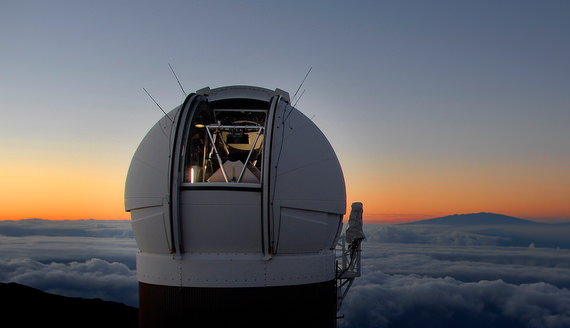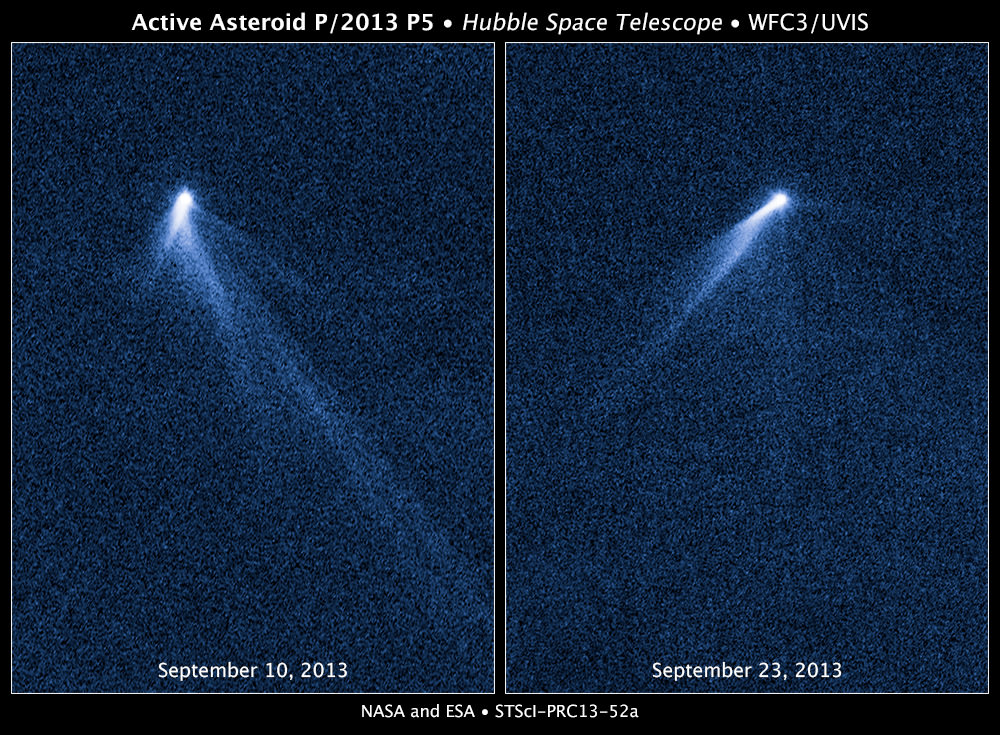A lawn sprinkler in space. That’s one of the descriptions NASA has for the curious P/2013 P5, which is spewing not one, not two, but six comet-like tails at the same time.
“We were literally dumbfounded when we saw it,” stated David Jewitt of the University of California at Los Angeles, who led the research. “Even more amazing, its tail structures change dramatically in just 13 days as it belches out dust. That also caught us by surprise. It’s hard to believe we’re looking at an asteroid.”
UCLA described the asteroid as a “weird and freakish object” in its own press release.
The mystery started when astronomers spotted a really blotchy thing in space Aug. 27 with the Pan-STARRS survey telescope in Hawaii. The Hubble Space Telescope then swung over to take a look on Sept. 10, revealing all these tails of debris flying off the asteroid.

It appears, scientists say, that the asteroid is rotating so quickly that it is ripping its very surface apart. They’ve ruled out a collision because the dust leaves in spurts; calculations by team member Jessica Agarwal of the Max Planck Institute for Solar System Research in Lindau, Germany estimated this happened on April 15, July 18, July 24, Aug. 8, Aug. 26 and Sept. 4.
Once the dust gets loose, the sun’s continuous stream of particles then pushes the debris into these extraordinary tails. It’s also possible that this “radiation pressure” contributed to the asteroid’s high spin rate. It appears the team is looking to find more of these objects to see if this is a way that smaller asteroids commonly fall apart.
“In astronomy, where you find one, you eventually find a whole bunch more,” Jewitt stated. “This is just an amazing object to us, and almost certainly the first of many more to come.”
The research appeared in Astrophysical Journal Letters and is also available in prepublished form on Arxiv.
Source: NASA


Now hear this:
The first step on the Moon was erased by the exhaust gases from the ascent module as it left the surface! And the flags were blown away, or anyway bleeched white by now by the solar radiation!
Is that correct? That might be useful for outreach purposes, on the theme that it’s time to go back to the Moon. I think global news media would like publish something like that. The popular story goes that they would remain there forever.
I doubt that the first boot print was erased by the ascent module – It would have been shielded by the descent stage.
The flags from Apollo 12, Apollo 14 and Apollo 17 are still standing. However, you are right in stating that UV light has bleached them white.
Cool.. radiation pressure eh.. hit by a passing CME?
Asteroid comet hybrid? There are stranger things in space.